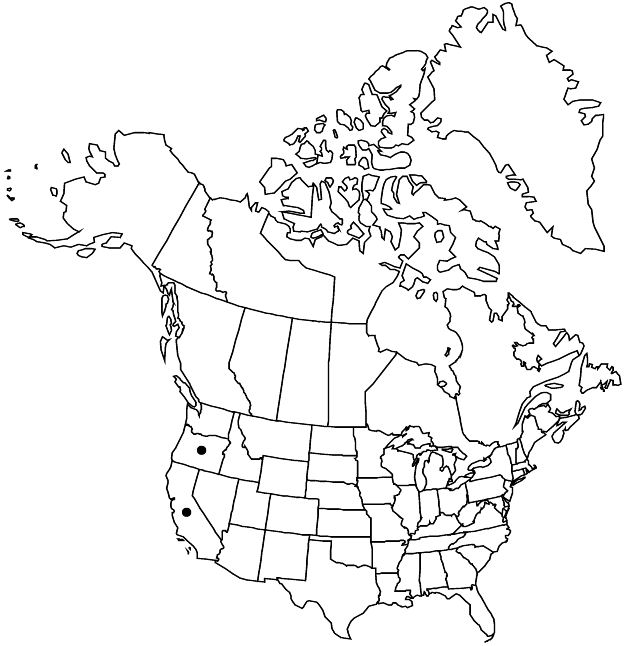Sidalcea elegans
Cybele Columb. 1: 35. 1914.
Herbs, perennial, 0.2–0.6(–0.8) m, sometimes ± glaucous, with woody taproot or caudex and rhizomes, freely rooting, 20–30 cm × 2–4 mm, often mat-forming, forming clones often 1–8 m2. Stems scattered, erect to ascending, base decumbent to erect, usually rooting freely, solid, proximally hairy or glabrate, hairs soft, simple and stellate, distally brittle, easily broken, glabrous-glaucous. Leaves mostly basal or cauline 3 or 4 on proximal 1/3 of stem, much reduced; stipules wide-lanceolate to ovate, 3–4 × 1–1.5 mm; petioles of proximal leaves 6–12 cm, 2–4 times as long as blades in basal leaves, those of cauline leaves greatly reduced to 1/2 times or as long as blades; blade rounded to reniform, palmately (3–)5–7-lobed, usually (1–)2–5(–10) × (1–)2–5(–10) cm, apex rounded, surfaces: abaxial harshly stellate-hairy, adaxial usually simple-haired, basal blades shallowly incised, lobes with 3 deep crenations, cauline blades usually deeply 3–5(–7)-lobed nearly to base, lobe margins dentate or entire. Inflorescences ascending, open, calyces not conspicuously overlapping except sometimes in bud, unbranched or few-branched, loosely (3–)5–10(–20)-flowered, not greatly elongated, 1-sided, 10–20 cm; bracts narrowly elliptic, shallowly 2-fid, proximal bracts divided to base and often with leaf remnant between, 3–4 mm, usually shorter than to equaling pedicels. Pedicels 3–4(–10) mm; involucellar bractlets absent. Flowers bisexual or unisexual and pistillate, plants gynodioecious; calyx 7–10 mm, slightly enlarged in fruit, uniformly, coarsely stellate-puberulent (some rays sometimes longer than others); petals dark pink, pale-veined at least when dry, pistillate 10–15(–20) mm, bisexual 20–25(–33) mm; staminal column 4–5 mm, sparsely hairy; anthers white to pale pink; stigmas 6 or 7(or 8). Schizocarps 6–7 mm diam.; mericarps 6 or 7(or 8), 3–3.5 mm, back not ribbed, roughened, sides and back strongly reticulate-veined-rugose and pitted (honeycomblike), top minutely glandular-puberulent, mucro 0.8–1 mm. Seeds 2 mm. 2n = 40, 60.
Phenology: Flowering (May–)Jun–Jul(–Sep).
Habitat: Open, dry woodlands, usually on serpentine
Elevation: 100–200(–900) m
Discussion
Sidalcea elegans has been included within S. malviflora; it is easily distinguished by its relatively long, slender, shallow rhizomes; open, one-sided inflorescences; and thin, brittle stems. It resembles S. glaucescens in its leaves and inflorescence and is easily distinguished by its rhizomes and soft, simple hairs at the stem base. It has been confused with S. asprella, from which it is distinguished by its simple, flexible hairs at the stem base and by its more developed and elongated rhizomes and variable leaves. Sidalcea elegans occurs in northwestern California and southwestern Oregon.
Selected References
None.
